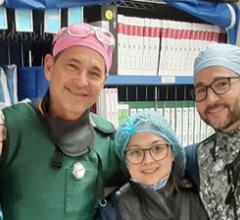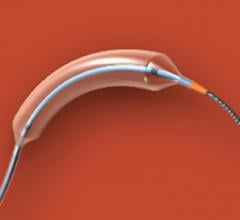
June 17, 2020 — MedAlliance announced its second CE mark approval for its Selution SLR 0.014 percutaneous transluminal coronary angioplasty (PTCA) sirolimus drug-eluting balloon (DEB) for the treatment of coronary artery disease. This includes indications for both de-novo lesions as well as in-stent restenosis. The approval applies to a broad range of balloon sizes, from 1.5 x 10 mm, up to 5 x 40 mm.
This European approval was supported by one-year results from the SELUTION SLR First-in-Human study, involving 56 patients enrolled across six centers in India, nearly half (46.6%) of whom had diabetes. 87.6% of patients had de-novo lesions and 12.4% had in-stent restenosis (ISR) lesions.
The primary endpoint of the study, freedom from device and procedure-related mortality through 30 days, was achieved in 100% of patients. There was no MACE (major adverse cardiovascular events) reported up to 30 days, and only one case occurring up to one year. Selution SLR demonstrated similar efficacy and safety to a drug-eluting stent (DES), with only a single patient requiring a TLR (target lesion revascularization). This single TLR case accounted for the low overall MACE rate of 2% at 12 months.
Co-Principal Investigators Dr. Shirish Hiremath, director of cath lab and consultant cardiologist, Ruby Hall Clinic, and Dr. Praveen Chandra, chairman, Department of Interventional Cardiology, Medanta - The Medicity, concluded that the data in this study support the safety, efficacy and optimal performance of Selution SLR in coronary applications.
"We are excited with the new technology in limus DEB Selution SLR," Hiremath said. DES has been the main stay of treating CAD for many years. But small vessel, long lesion, bifurcation and side branches, in-stent re-stenosis have been particularly challenging. With the limus DEB we can now offer alternative treatment modality and also "Leave Nothing Behind" to allow complete healing.
"I am extremely pleased with the CE mark approval of this innovative technology," added Dr. Chandra. "Small vessels and ISR are challenges for existing DES and DEB technologies, but this exciting new tool of a limus-eluting balloon can truly address the coronary conundrum of leaving nothing behind in the coronary artery, for complete healing."
In February 2020 MedAlliance received CE mark approval for Selution SLR for the treatment of peripheral artery disease. The company recently announced completion of its below-the-knee (BTK) First-in-Human study in Singapore. The SAVE Study in Arterial Venus Fistula (AVF) enrolled its first patient in April. The STEP Pedal Arch study is to commence enrollment this quarter. A 500 patient post marketing clinical study will follow as well as the US IDE ISR study which will begin enrolment later this quarter.
MedAlliance is the first DEB company in the world to receive U.S. Food and Drug Administration (FDA) Breakthrough Device Designation Status for a coronary DEB. Selution SLR has now achieved this status for a range of indications: the treatment of AV-Fistula; coronary in-stent restenosis and peripheral below-the-knee lesions.
Selution SLR's technology involves unique MicroReservoirs made from biodegradable polymer intermixed with the anti-restenotic drug sirolimus. These MicroReservoirs provide controlled and sustained release of the drug. Extended release of sirolimus from stents has been proven highly efficacious in both coronary and peripheral vasculatures. MedAlliance's proprietary CAT (Cell Adherent Technology) enables the MicroReservoirs to be coated onto balloons and adhered to the vessel lumen when delivered via an angioplasty balloon.
For more information: medalliance.com


 June 13, 2024
June 13, 2024 









